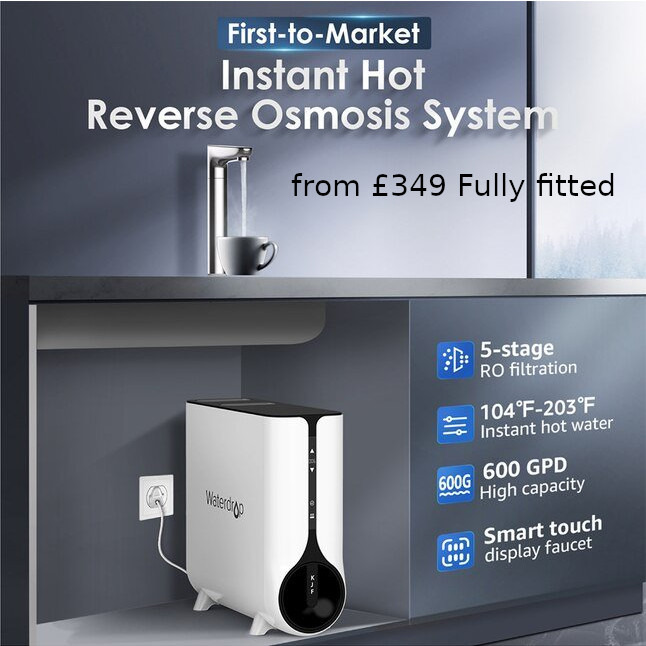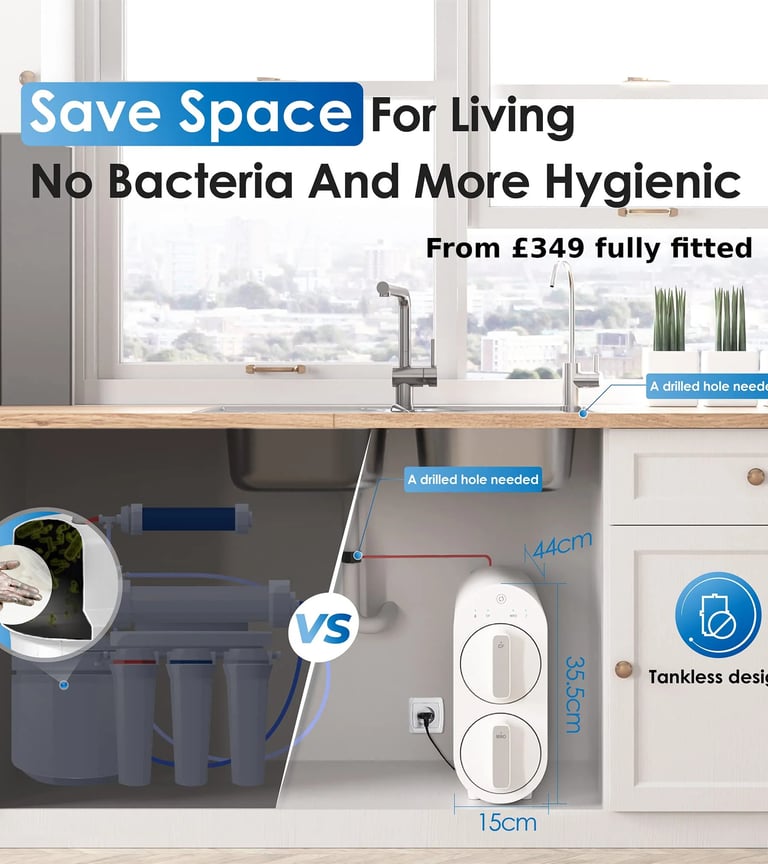Clean Water Systems
Get energy-saving solutions
SUSTAINABLE LIVING
Widely considered one of the most effective water filtration methods, reverse osmosis (RO) creates clean, great-tasting water. RO systems are used in a variety of applications, including filtration for whole houses, faucets, aquariums, and restaurants. No matter what kind of water you start out with, there is likely an RO system that will suit your needs. Below you will find what reverse osmosis systems are, how they are beneficial, and what they are used for. You can also find a list of the best reverse osmosis systems on the market.
What is reverse osmosis?
Reverse osmosis is a multi-stage water treatment process that removes contaminants from unfiltered water, or feed water, when pressure forces it through a semipermeable membrane. Residential reverse osmosis systems utilize at least three stages of treatment to reduce levels of virtually all contaminant types. In the final stage, the RO membrane, water flows from the more concentrated side (more contaminants) of the membrane to the less concentrated side (fewer contaminants) to provide clean drinking water. The fresh water produced is called the permeate. The concentrated water left over is called the waste or brine.
How does reverse osmosis work?
Reverse osmosis utilizes a semipermeable membrane with very small pores that traps contaminants while water is pushed through. In osmosis, water becomes more concentrated as it passes through the membrane to obtain equilibrium on both sides. Reverse osmosis, however, blocks contaminants from entering the less concentrated side of the membrane. For example, when pressure is applied to a volume of saltwater during reverse osmosis, the salt is left behind and only clean water flows through.
What is a Reverse Osmosis System and How Does it Work?
How does a reverse osmosis system work?
A reverse osmosis system removes sediment and chlorine from water with a prefilter before it forces water through a semipermeable membrane to remove dissolved solids. After water exits the RO membrane, it passes through a postfilter to polish the drinking water before it enters a dedicated faucet. Reverse osmosis systems have various stages depending on their number of prefilters and postfilters.
Stages of RO systems
The RO membrane is the focal point of a reverse osmosis system, but an RO system also includes other types of filtration. RO systems are made up of 3, 4, or 5 stages of filtration.
Every reverse osmosis water system contains a sediment filter and a carbon filter in addition to the RO membrane. The filters are called either prefilters or postfilters depending on whether water passes through them before or after it passes through the membrane.
Each type of system contains one or more of the following filters:
Sediment filter: Reduces particles like dirt, dust, and rust
Carbon filter: Reduces volatile organic compounds (VOCs), chlorine, and other contaminants that give water a bad taste or odor
Semipermeable membrane: Removes up to 98% of total dissolved solids (TDS)




